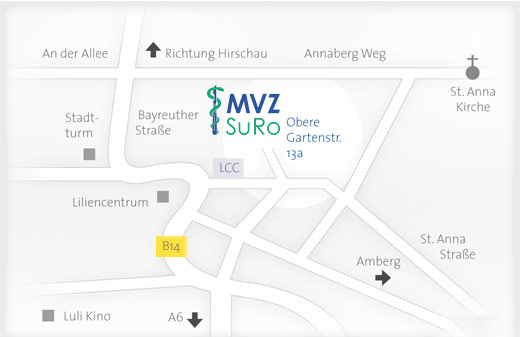Hernia surgery
In an abdominal wall hernia (also called abdominal wall hernia), intestines push through a weak spot in the abdominal wall. An abdominal wall hernia can have various causes. Weakened abdominal wall muscles or connective tissue weakness play a role, as does increased pressure inside the abdomen. This can be caused by heavy carrying and lifting, chronic coughing and sneezing or strenuous pressing during bowel movements and by being overweight. All of these occasions then create additional pressure on the abdominal wall, which can lead to a hernia in the abdominal wall in the long term. A bulge then forms that can be seen and felt from the outside, e.g. in the groin or at the navel.
However, there are also congenital abdominal wall hernias, especially in the area of the groin and the navel. Incidentally, the umbilical hernia (also called umbilical hernia) of the infant is the only type of hernia that can heal spontaneously, i.e. without surgery. The three most common types of abdominal wall hernias are:
Inguinal hernia
A natural weak point of the abdominal wall is located in the inguinal canal. The vas deferens and blood vessels for the testicle pass through this canal in men, and the round uterine ligament in women. About 25% of men and 3% of women develop an inguinal hernia during their lifetime. According to estimates, about 20 million inguinal hernias were operated on worldwide in 2008. In Germany, between 250 and 300,000 inguinal hernias (exact numbers do not exist) are currently operated on. Inguinal hernia surgery (also known as inguinal hernia) is the most common general surgical operation ever performed on men.
Umbilical hernia
An umbilical hernia, also called an umbilical hernia or umbilical hernia, occurs in the area of the belly button. It may be congenital or develop over the course of a lifetime. Often, an umbilical hernia can occur after pregnancy.
Incisional hernia
Incisional hernias (also called incisional hernia) occur exclusively in the area of previous surgery. This type of hernia can affect people of any age and gender. The scar is a weak spot where a hernia can develop even many years after surgery.


